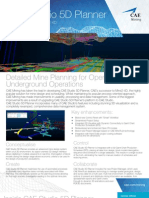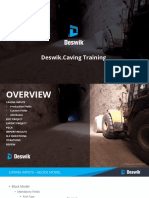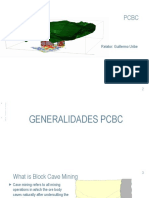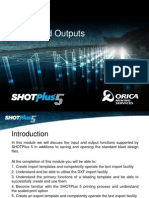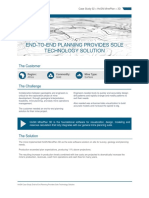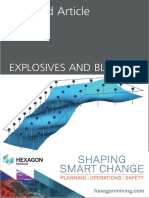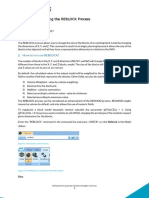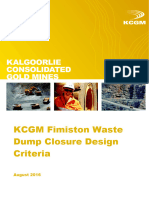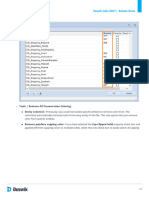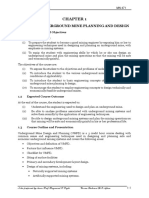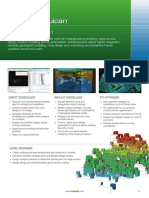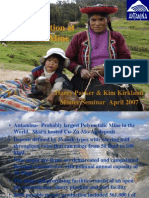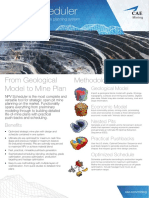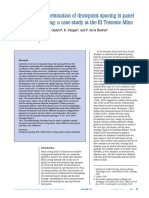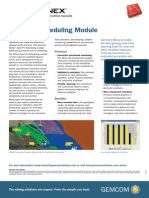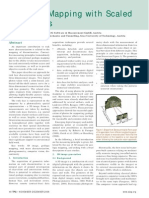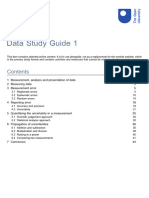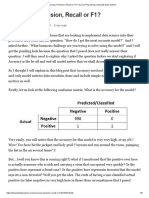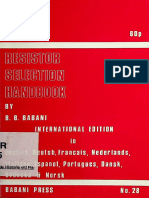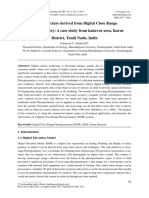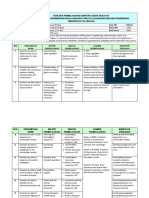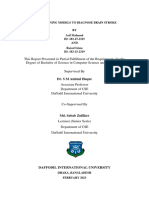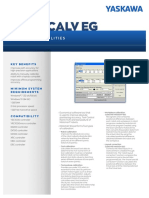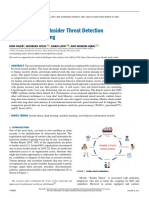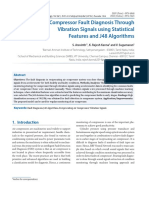RockMass and Deswik Integration:
A Case Study with Boliden
2023
�Table of Contents
03 Summary
04 Context
05 Background
06 Project Objectives
06 Workflow
08 Summary of Results
11 Conclusions
2
� Summary
As data collection technology evolves and becomes more prevalent in
underground day-to-day operations, an increasing number of mine sites
are adopting digital geological and geotechnical field mapping.
The geology team at Boliden Tara Mine, located in County Meath,
Ireland, became early adopters of digital data collection underground
following the implementation of Deswik GeoTools as their primary
mapping tool. Since introducing the software into their day-to-day
workflow, the team has developed an efficient, customized process using
Deswik’s tablet-mapping application (Deswik.Mapping) for their daily
field tasks.
Their existing process uses 2D images that are manually registered
into the 3D mine model. While drawing on 2D images is more precise
than drawing freehand on paper, this method presents constraints on
spatial accuracy. This step in the workflow is completed manually and is
therefore subject to manual error. Further inaccuracies can occur with
the distortion of 3D features in the photography caused by camera
lenses (ie. focal length), camera angle, and lighting.
By collecting data with the RockMass Mapper, which automatically
registers the scans based on underground survey control, and importing
them into Deswik.Mapping, existing Deswik users can now map
geological and geotechnical features against a true 3D representation of
the rock face.
3
� Context
Existing digital mapping processes using 2D images require
Problem
manual registration into a 3D model which presents
constraints on spatial accuracy
Focal length, camera angle and lighting can distort 3D
geological features, which can cause further inaccuracies in
mapping results
Approach
Collect 3D mapping datasets underground using the RockMass
Mapper and test the integration potential with the
Deswik.Mapping tablet application at the face
The use of the RockMass Mapper in collaboration with Deswik
Solution
can offer users an all-in-one 3D digital mapping solution to
meet their daily underground data collection requirements
Datasets can be exported from the Mapper, plotted in
Deswik.Mapping within minutes at the face, and can be
modified directly within the application for further
customization
4
�Background
RockMass Technologies technical staff visited Boliden Tara Mine with the
Mapper tool as part of a multi-day data site visit. The geology team on
site was heavily involved in the development of the Deswik.Mapping
tablet application and had successfully implemented a streamlined
custom workflow for their daily underground mapping tasks. Their
current workflow consists of capturing high definition 2D images of faces
and sidewalls, importing and manually georeferencing the images into
the application, then mapping directly on the images.
One of the primary objectives of the RockMass site visit in October was
to investigate the potential of integrating the Mapper’s 3D georeferenced
datasets into Deswik to expand its functionality and improve data
accuracy results. As an additional constraint, the geology team wanted to
maintain their current system of collecting and processing most of the
mapping information in the field, rather than in the office, so the team
also tested the Mapper’s direct export capability while on site. The full
summary list of project objectives is included below.
5
�Project Objectives
1
Data transfer underground
Must be seamless and easy from the Mapper to the
mapping tablet and can be done underground at the face.
2 Integration with Deswik
Should be directly annotated in 3D within Deswik.Mapping.
3
High Resolution pointclouds
Obtain high-quality, complete 3D point clouds in RGB
colour that surpass the quality of the 2D images.
Workflow
The RockMass Mapper digital mapping datasets can be easily imported,
plotted, and modified within the Deswik suite, as shown in the
workflow breakdown on the next page. Within minutes of mapping
an underground area, users can export their digital dataset from
the Mapper device to a USB and plug it into a Deswik-supported
mobile tablet. Importing the data into the software is made easy by the
Mapper’s manageable file sizes, CAD-supported file types, and no
additional data post-processing. Once the dataset has been loaded
into Deswik, users can add, modify, or remove any mapping
information in 3D using the snapping tool.
Next Page
Workflow Summary
6
�Workflow
Map underground using the RockMass Mapper's
Face/Scanline workflows
Export dataset(s) from The Mapper via USB
Connect USB to a tablet that has Deswik.Mapping
Import Mapper dataset into new or existing project
Import georeferenced pointcloud (.XYZ or .LAS)
Import DXF Vector annotations
Import CSV summary report
*Plot structural orientation information as
georeferenced 3D discs
Add/Modify Mapper annotations in 3D within
Deswik.Mapping
Draw new feature
Turn on snapping and ensure "nearest" snap mode is
selected
Save project
7
�Summary of Results
Data Integration at the Face
In only a matter of minutes, RockMass Mapper data can be exported
via USB at face and imported directly onto a tablet running the
Deswik.Mapping. The data requires no post-processing, and all the
default file export types are supported by the Deswik software. Data
entry into Deswik can be even further streamlined by using the
software’s Process Maps function as shown in the example figure 1.
Figure 1: Example 3D dataset and sample RockMass process map in Deswik.Mapping.
8
�Summary of Results
3D Point cloud Annotation in Deswik.Mapping
Deswik users can annotate in 3D directly on the RockMass Mapper
pointclouds using polyline snapping tools (see Figure 2). This can be
done directly on a portable device underground, or on a desktop
computer in the office. Furthermore, any imported DXF annotations
collected by the Mapper can be modified using the same process.
Figure 2: Example of annotating a RockMass
Mapper 3D pointcloud in Deswik.Mapping.
9
�Summary of Results
High-Quality 3D Pointclouds
The RockMass Mapper captures true colour pointclouds with
millimeter resolution of the rock face. This level of detail can be
comparable to a high-definition image and provides an accurate
depiction of the 3D face (see Figure 3 and Figure 4). Furthermore,
Mapper data prevents data inaccuracies which can occur with the
distortion of 3D features in traditional photography. Rock face conditions
such as dampness and rock colour can however present some
challenges for the Mapper’s LiDAR scanner, and further testing is
required to better define these limitations.
Figure 3: HD image of mapping face Figure 4: RGB pointcloud of mapping face
taken with the RockMass Mapper. captured with the RockMass Mapper.
10
�Conclusions
As shown in this study, the use of the RockMass Mapper in
collaboration with Deswik can offer users an all-in-one 3D digital
mapping solution to meet their daily underground data collection
requirements. The process involves a simple, step-by-step workflow
that can be easily adopted by any existing Deswik user. By integrating
the Mapper’s 3D dataset into Deswik.Mapping, existing Deswik
users now have the option to trace detailed geological features as
they appear in true space, therefore improving mapping accuracy
and long-term results.
See it in action
or
Learn more about our solutions visiting RockMass Website
Special thanks to Tara Mine for hosting the RockMass
team on site and for providing site-specific datasets to
improve this study.
11



